Eco paving tips: choosing sustainable materials for your outdoor space
Do your bit for the planet with our eco paving tips for your garden. The latest styles mix cool good looks with a greener footprint to add the feelgood factor to hard landscaping
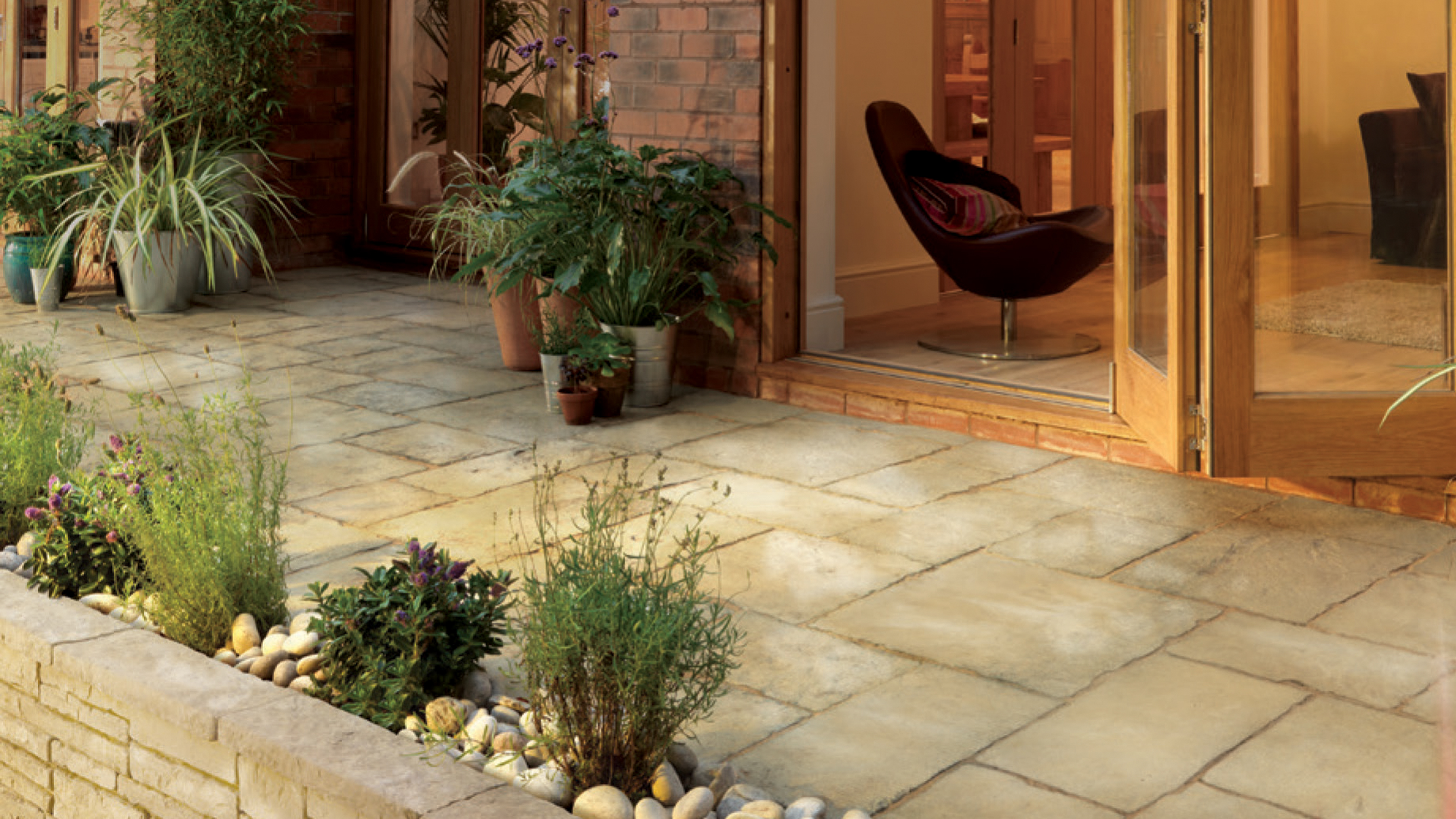

On the lookout for eco paving tips to help you make the most sustainable choice for your space? We're here to help. An eco garden is fast becoming a must-have, as more and more of us want to make sure our outdoor space is as green as can be. The trend for smart low-carbon homes is really taking off, and of course that extends to our gardens and paving ideas too.
You might already be trying out a hot composter, making your own mulch and growing vegetables organically. Pesticides and chemicals are out, with bird feeders the go-to accessory to tempt birds in to your garden so you can deal with common pests the natural way. Some of us are even doing away with high maintenance lawns because of all that chemical greening up and the amount of watering needed. It’s easy to make your garden more environmentally friendly with a few simple changes.
There’s one important area that often gets overlooked though, and that’s how to make your hard landscaping more sustainable. If you’re planning a garden redesign project such as a new patio or driveway it’s equally important to think about the eco credentials of the paving you choose, especially as it will be something you live with for a long time.
Read on to find out our top eco paving tips and discover how your garden can play a part in this vital shift towards a more eco way of living. After all, it's never been more important.
Why eco paving matters now
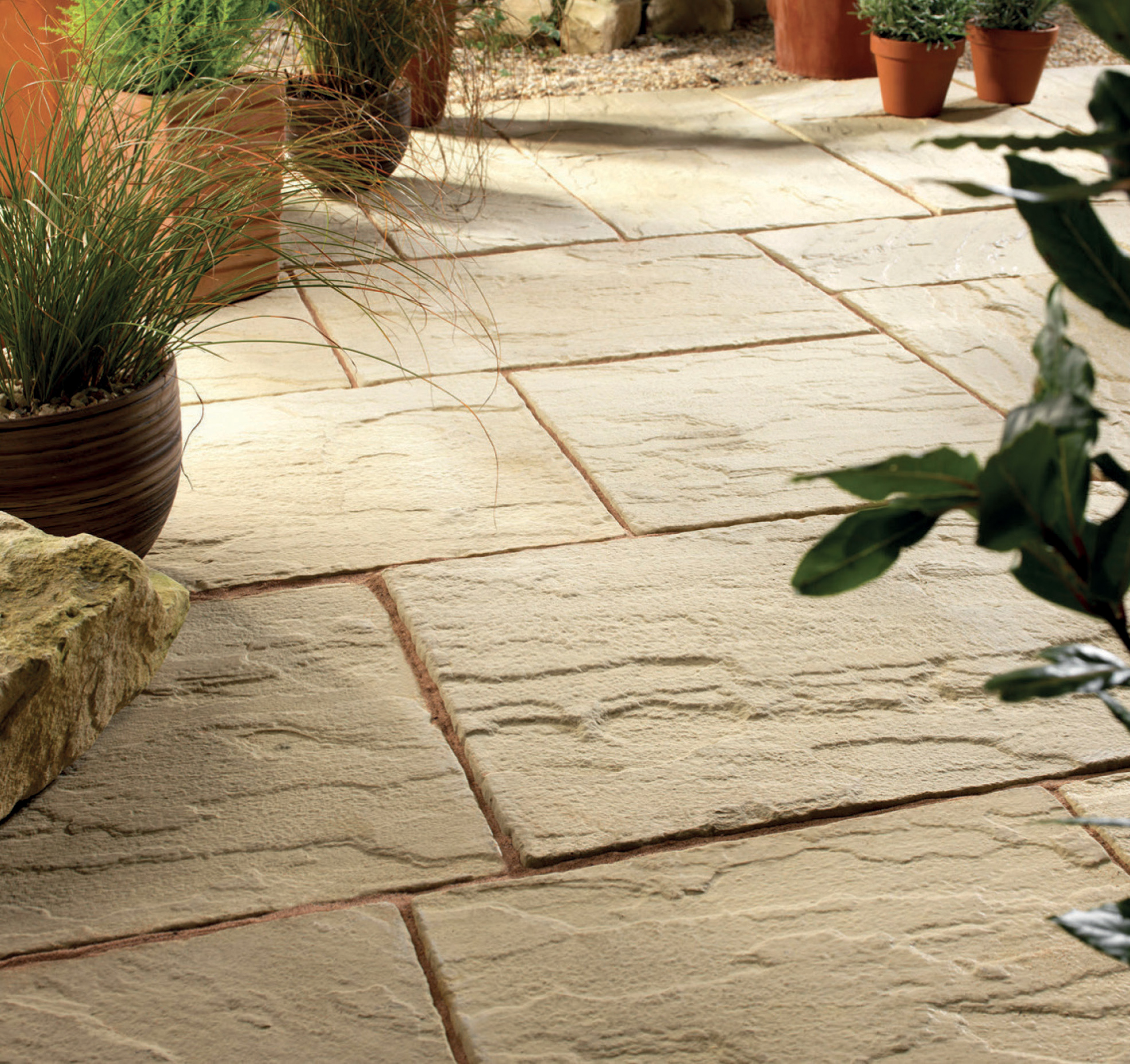
We are becoming much more eco-conscious when it comes to the purchases we make for our outdoor spaces. There’s been a real shift towards trying to live sustainably, and this includes incorporating a more environmentally friendly solution for garden landscaping ideas.
In the latest research carried out by Bradstone over 60% of respondents said that it's important that their landscaping product is eco-friendly. About 50% of the respondents also claimed that low carbon is the most important sustainability criteria for a landscaping product.
Eco paving tips: what you need to consider
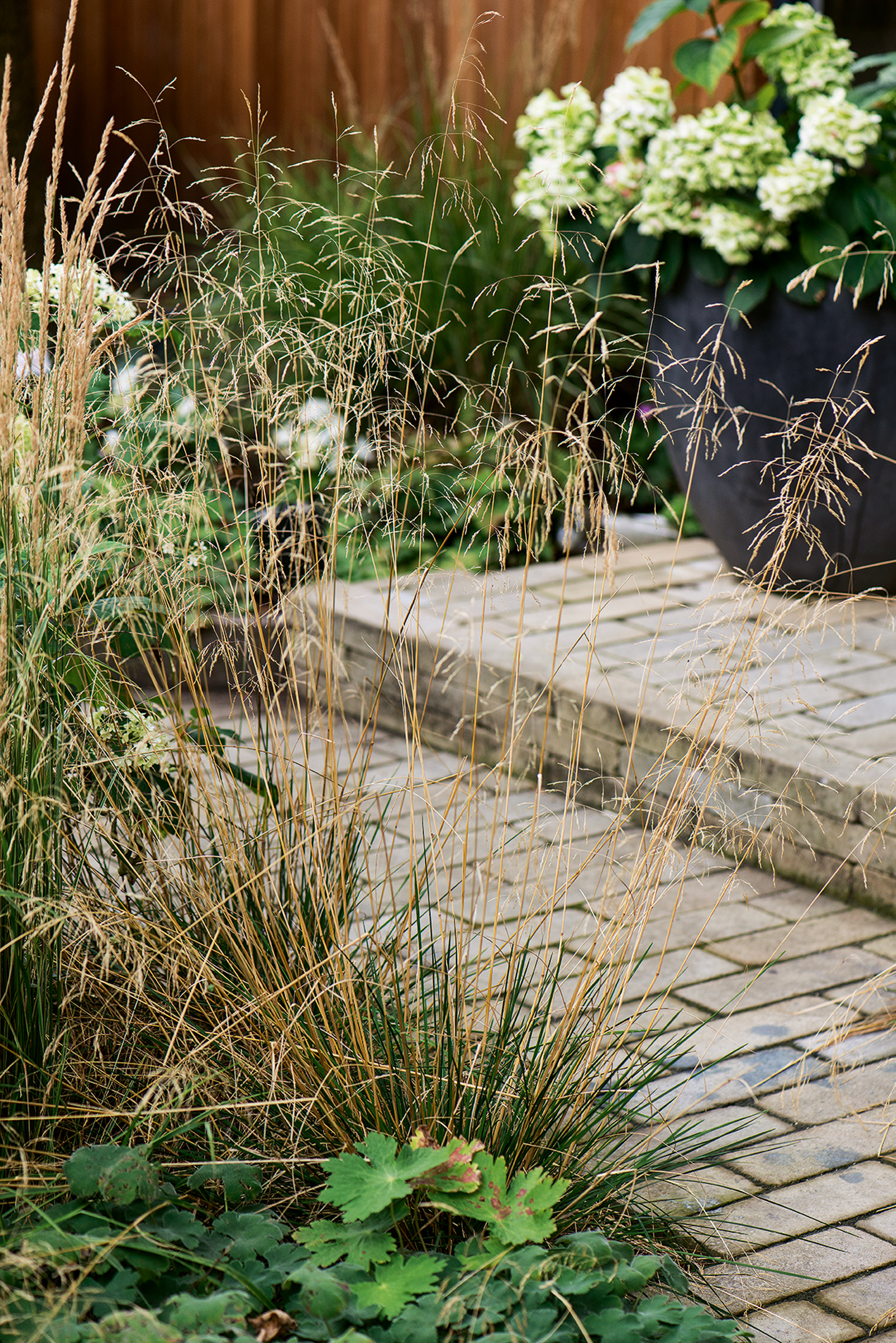
Think about including reclaimed materials such as bricks in your hard landscaping project to complement the scheme
- Look close to home to source natural stone. Buying pavers that use stone imported from developing countries is problematic, so consider all the alternatives when planning a new patio or pathway. The environmental cost of imported stone is also high, particularly the amount of energy used to transport the stone halfway across the globe to our gardens.
- Re-use concrete pavers, stone, bricks and cobbles wherever possible. Try salvage yards or freecycle.
- Ask your garden designer to choose a concrete mix that uses recycled aggregates and replaces Portland cement with materials that would otherwise go into landfill.
- Choose pavers made from recycled materials.
- Opt for permeable paving with gaps that allows water to drain through into the soil rather than run off, or use recycled plastic moulds filled with resin bonded gravel.
- For paths, consider natural or recycled materials, such as chipped wood or bark, crushed brick and recycled aggregates.
- If you want Indian sandstone or Chinese slate, source your materials sustainably from an ethical importer.
- Mix paving with other natural materials to cut down on the overall amount you need to use.
- Don't pave over your front garden. Instead use permeable paving blocks and grids to lessen the environmental impact. If you're looking for more inspiration, head over to our front garden ideas feature.
What are my choices when it comes to eco paving?
Here are a few eco paving tips to point you in the right direction and smooth your way to choosing an eco-friendly paving option.
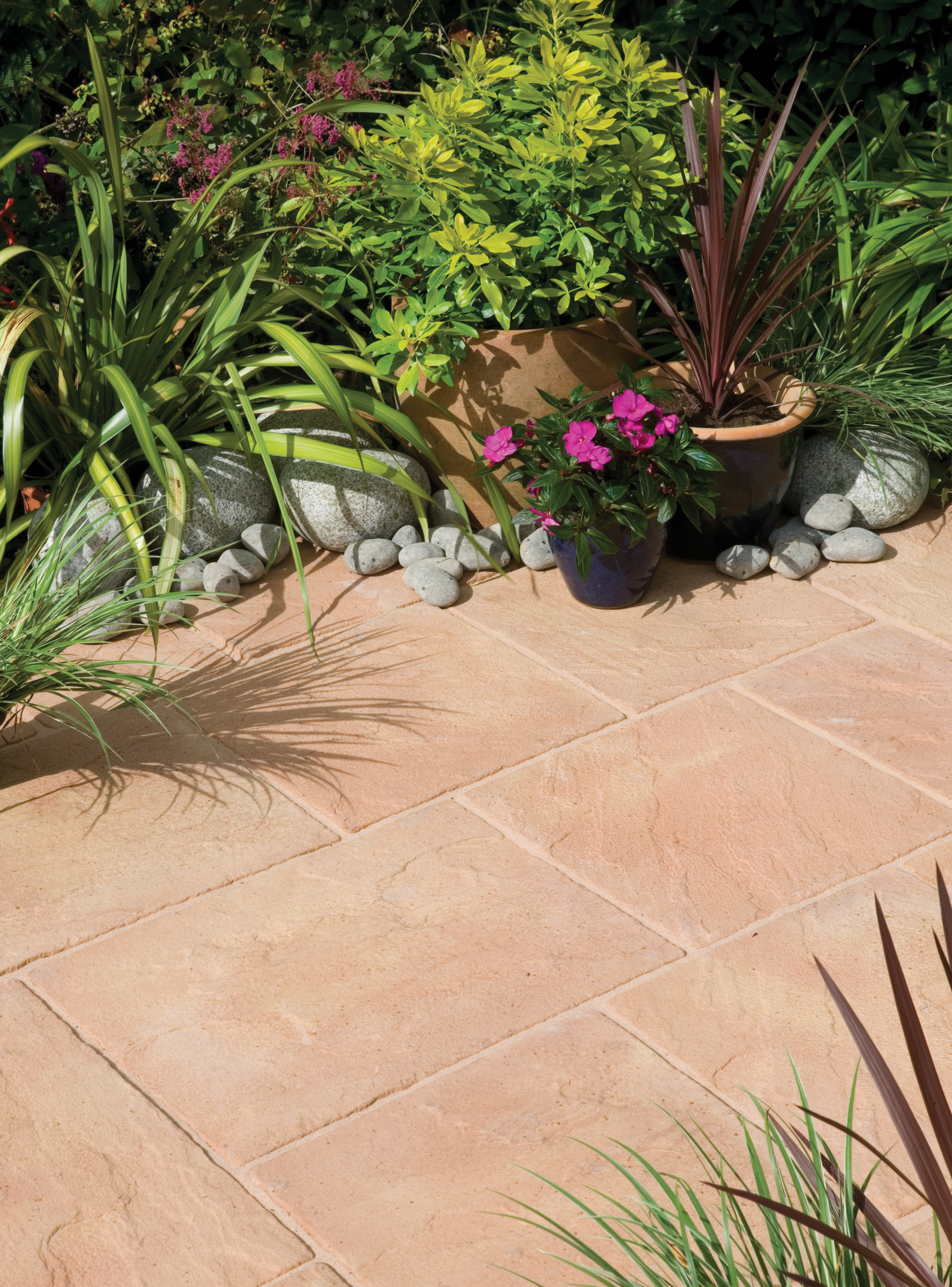
Specify low carbon paving
There is a real push now to make pavers using less carbon, so do your research and choose eco options for your patio ideas. It’s kinder to the environment and helps protect your carbon footprint too.
It gives you peace of mind too as you can be sure you’re getting an eco paving solution that lowers your carbon footprint. This means you can do more for the environment while also improving the look of your garden with the very latest designs.
For example, using Bradstone ECO products, a patio measuring 30 square metres will now produce less carbon during manufacture compared with the old mix. The carbon footprint has been reduced by more than 20%, a carbon saving equivalent to that generated by three mature trees over a year. This has been achieved through improvements in manufacturing and the design mix to help reduce the carbon footprint of each paver.
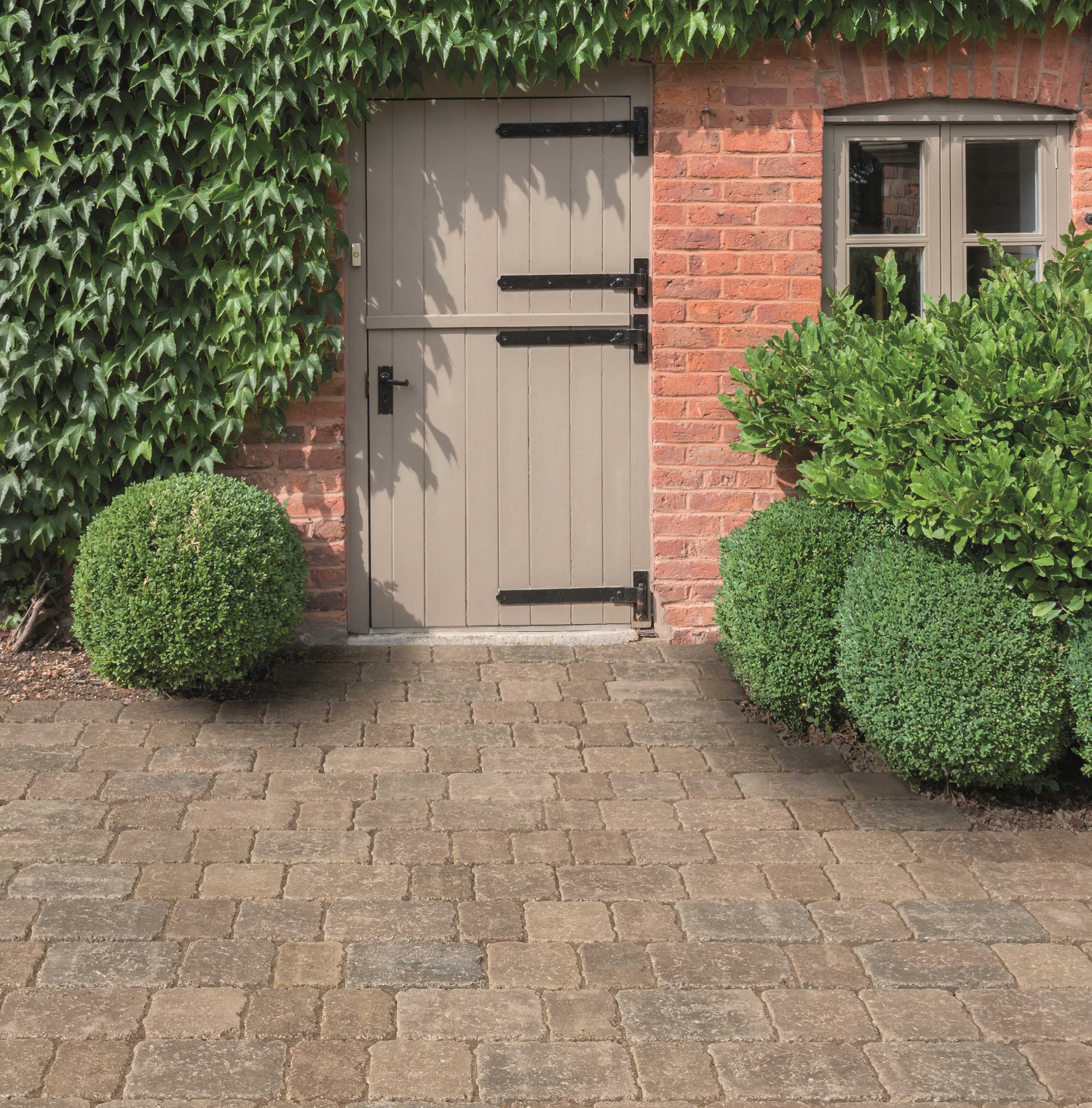
Use permeable paving
These products don't just look good, they are beneficial to the environment and are ideal for paths through gardens and paving driveways. 'The porous nature of permeable surfaces helps ground water to flow between open spaces in the materials and soak away,' explain the team at Bradstone. 'Permeable surfaces also filter pollutants as the water percolates through the surface.'
The design pictured above has a rustic look that would work beautifully alongside cottage garden ideas.
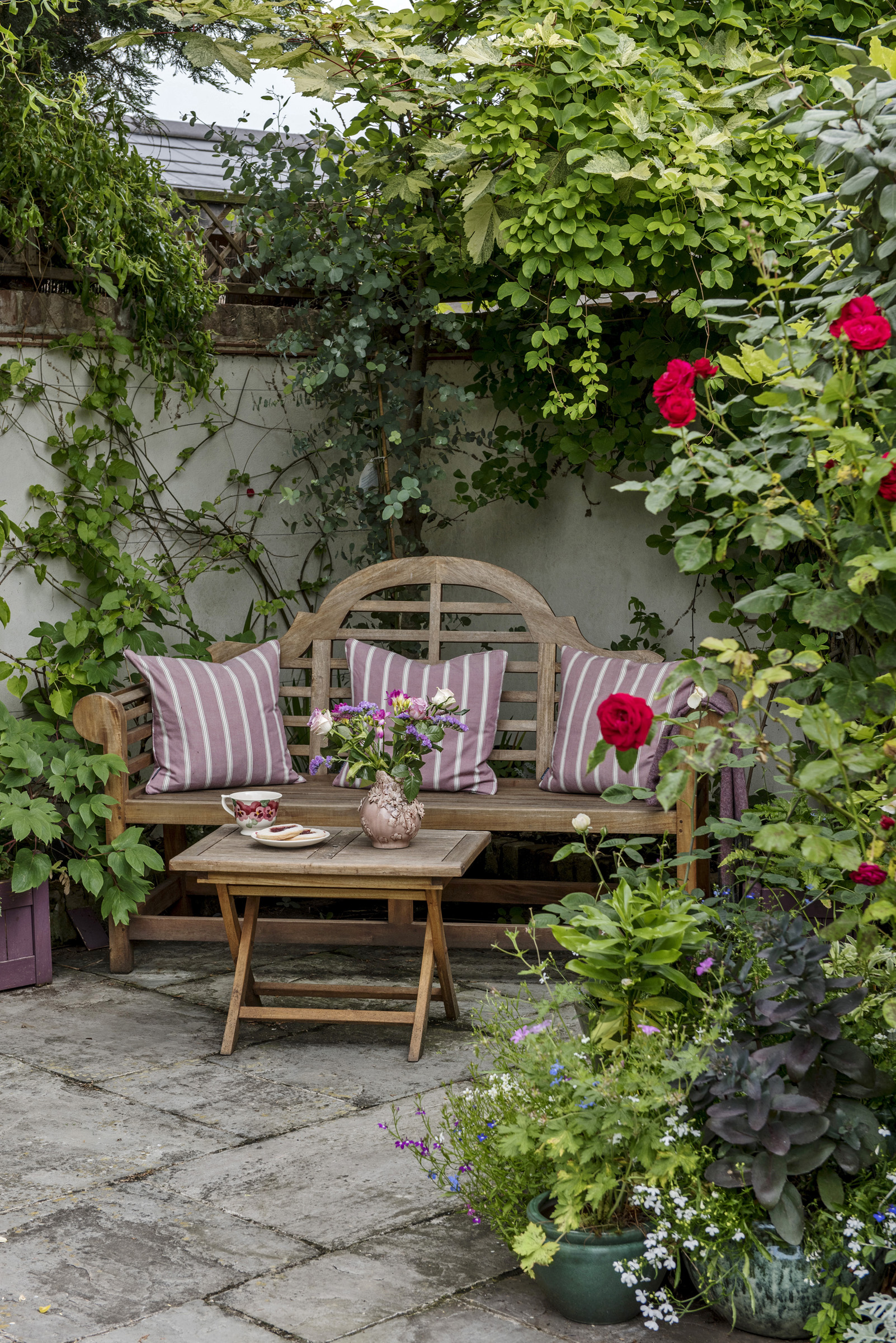
Recycled pavers add a heritage look to a patio
Reclaim or upcycle
When designing a patio or paved area in your garden, use recycled materials to dress your outdoor space in a more eco-friendly way. Incorporating reclaimed or upcycled items into your design will not only create a completely unique feature for you to enjoy, it will also prevent that item going to landfill.
'If you’re practical and good with your hands – or know someone who is – why not turn some reclaimed lumber into a pergola or upcycle a water trough into a water feature or bird bath?' says the team at Bradstone. 'You might save a few pennies along the way as well!'
There's more top tips on how to use salvage for garden upcycling ideas in our guide.
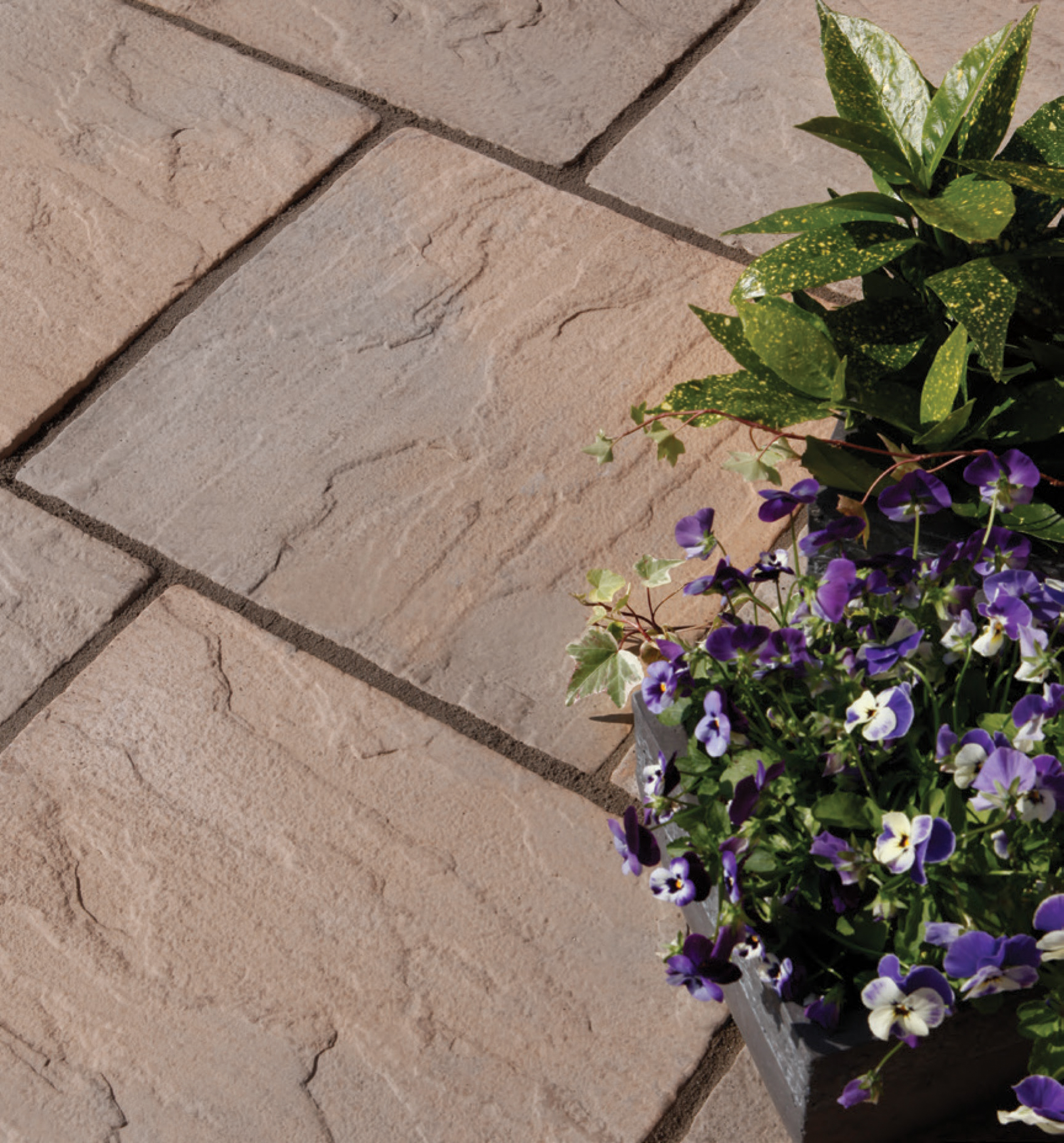
Incorporate planting
Adding planting to your hard landscaping scheme is a great way to demonstrate a greener approach to garden design. Add interest by building raised garden beds or insert planting pockets into the layout of your paved area.
Plant out with pretty flowers. Or try herbs and edible plants, and you’ll soon have your very own kitchen garden. What could be more eco-friendly than that?
Lay a ribbon driveway
Another sustainable design option to consider that will add green kerb appeal to your driveway ideas. They are increasing in popularity because of their eco-friendly permeability and visual appeal. 'Simply pave the area where the wheels of your car align and lay a grass ribbon down the middle,' explain the team at Bradstone.
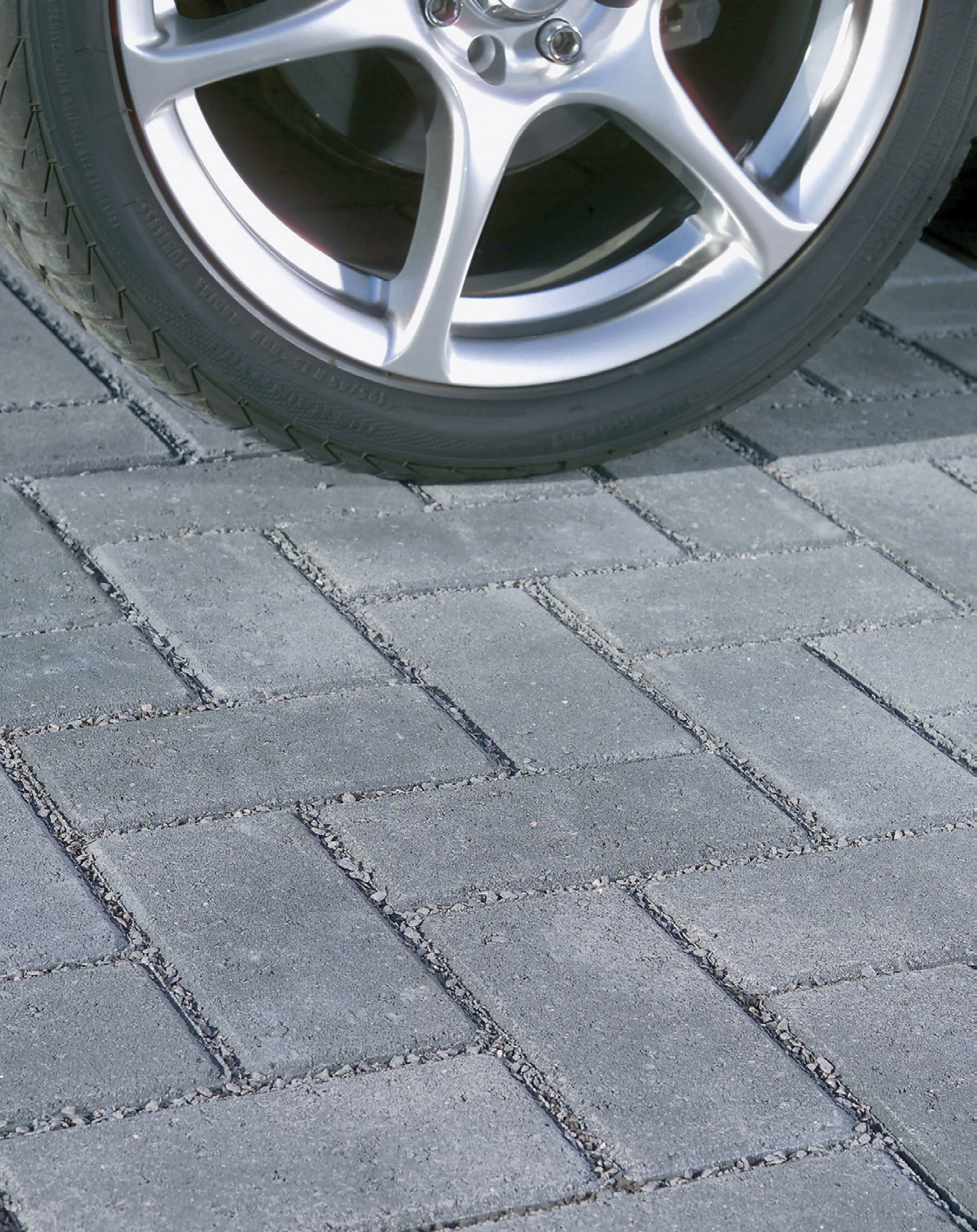
Choose open concrete grids
These can be used as an alternative to traditional concrete paving. They use the same methods but there is less overall concrete being poured and the grid design of the concrete allows for erosion protection and drainage while still being durable. Once laid they are usually filled with soil then planted with ground cover plants or grass. There are also variations that incorporate gravel into the design.

Choose sustainable natural stone paving
This is quarried direct from the earth so there are no man-made materials involved. The extraction process is also low on toxic chemicals, which boosts its green credentials. It's important to check that the natural stone you choose is quarried in a sustainable fashion though, so choose a supplier who ticks the eco box. Plus, it looks great too, adding a lovely rustic touch to patios or garden path ideas.

Lifestyle journalist Sarah Wilson has been writing about gardens since 2015. She's written for Gardeningetc.com, Livingetc, Homes & Gardens, Easy Gardens and Modern Gardens magazines. Having studied introductory garden and landscape design, she is currently putting the skills learned to good use in her own space where the dream is establishing a cutting garden.
